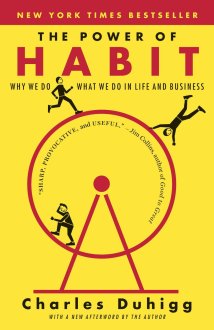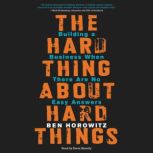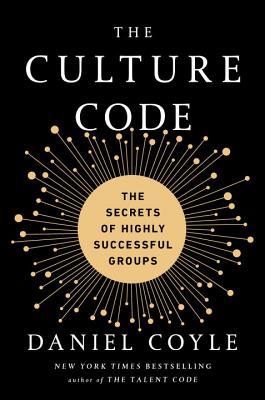 The Culture Code, by Daniel Coyle, is an amazingly interesting book about fostering successful cultures at work. It’s not about artificial ways to increase morale, but about encouraging a sense of belonging, and fostering an environment where everyone can do their best work, and continually improve the workplace. What strikes me the most about the book is how interesting, and applicable (and new) the stories are.
The Culture Code, by Daniel Coyle, is an amazingly interesting book about fostering successful cultures at work. It’s not about artificial ways to increase morale, but about encouraging a sense of belonging, and fostering an environment where everyone can do their best work, and continually improve the workplace. What strikes me the most about the book is how interesting, and applicable (and new) the stories are.
I have to say that the quality of this book not only makes it 5 stars, but puts on my rare favorites shelf. The quality is doubly-amazing when contrasted to the author’s prior book The Talent Code, where there wasn’t enough practical advice, and the stories were downright boring.
I’d like to share 2 broader stories, and then list out snippets of themes and stores to remember where to find them later when I need them.
After Toy Story, Ed Catmull realized that most companies that achieve success don’t maintain it. He realized that preventing a decline was the next problem to solve. All movies are bad at the start. Frozen and Big Hero 6 were disasters.
Building purpose in a creative group is not about a generating a moment of breakthrough, but building systems that can churn through lots of ideas in order to unearth the right choices. He focuses less on the ideas, than on people. To give them tools and support to locate paths, make hard choices, and navigate the process together.
You need to value the team, not the idea. “Give a good idea to a mediocre team, and they’ll find a way to screw it up. Give a mediocre idea to a good team, and they’ll find a way to make it better. The goal should be to get the right team together, get them moving in the right direction, and get them to see where they’re making mistakes, and where they’re succeeding.”
When Pixar was bought by Disney, and the Pixar execs were put in charge of Disney animation, there was no turnover. “We put in some new systems, they learned new ways of interacting, and they changed their behavior. And now they are a completely different group of people when they work together.”
They made people accountable for their own ideas, and put people in functional groups rather than role-basest building layout.
Danny Meyers restaurants use catch phrases that act as heuristics that provide guidance by creating “if-then” scenarios in a vivid, memorable way. Mostly applicable to his restaurants, but you can see how it identifies the priority in a memorable way. It ties in with the book’s theme of creating a culture of belonging, and a sense of purpose. I just liked the statements.
- If someone is rude, make a charitable assumption.
- You can’t prevent all mistakes, but you can solve problems graciously.
- If it ain’t broke, fix it.
- The road to success is paved with mistakes well handled.
- We are all paid to solve problems. Make sure to choose fun people to solve problems with.
- There is glory in making a mistake.
- Stone after stone to form a bridge.
- If you’re not growing anywhere, you’re not going anywhere.
- No shortcuts.
- Work hard. Be nice
- Don’t eat the marshmallow.
- Do the right thing when no one is watching.
- Read the guest
- Write a great final chapter
- Turning up the home dial
- Loving problems
- Finding the yes
- Collecting the dots, and connecting the dots
- Creating raves
- One size fits one
- Making the charitable assumption
- Put us out of business with your generosity
- To get a hug you have to give a hug
- The excellence reflex
Stories and studies:
- Belonging
- 3 belonging cues: Are we connected? Do we share a future? Are we safe?
- The Wipro call center found that by training employees to belong with a motivational presentation made them 200% more likely to stay at the job.
- Expectations + Confidence
- There’s a magic phrase that a study found encouraged significantly more effort and improvement in students: “I’m giving you this feedback because I have very high expectations and I know that you can reach them.”
- Popovich, coach of the San Antonio Spurs built a culture of excellence and winning.
- Regarding a restaurant who trained an employee, but was on his own the first night: “Here’s how we’re going to know if things go well–if you ask for help ten times today. And if you ask for help no times today then I think we know how things are going to have gone.”
- Let people know that they are important for the teams success.
- Discipline
- Highlight the small behaviors that lead to the outcomes not the outcomes themselves. For example in a hockey game it’s highlighting the person who got back to defense real fast to steal the puck that led to the goal not the person got the assist or scored the goal.
- Purpose
- Johnson and Johnson took their credo statement very seriously, not because management said so, but because they had it bottoms-up reviewed periodically to reaffirm it with employees. Then, when they had a Tylenol cyanide poisoning scare, they looked at the credo to know what to do, and came out stronger, despite predictions that the brand would be ruined.
- You have priorities. If you want to grow you’d better name them. And you’d better name the behaviors that support those priorities. (Colleagues, guests, community, suppliers) “How we treat each other is everything.”
- Structure
- Close proximity and workspace increases the amount of communication and interaction dramatically. Which is highly correlated with success in the project.
- 10 person tables at lunch increased productivity because of increased collaboration.
- The government created a contest where they wanted groups to form that would find red balloons launched secretly around the world. A team at MIT won after implementing multi-level-marketing incentive scheme, where you would get an award for finding one, and a smaller award for being in the chain that invited the person to the group.
- Psychological Safety
- Vulnerability sparks cooperation and trust. Most people think vulnerability would come after you trust someone but actually trust is formed after you see people in their vulnerability
- Seal Team 6 fostered a culture of bottoms-up problem solving that allowed them to have success in the raid on Osama bin Laden
- Management
- Leaders empower those closest to the problem.
- Empowering teams:
- What do you like most about your job?
- What do you like least?
- What would you change if you were captain.
- Anybody have any ideas?
- Soliciting management feedback:
- What is something I do that you’d like me to keep doing?
- What is something that I don’t do frequently enough that you’d like me to do more?
- What can I do to make you more effective?

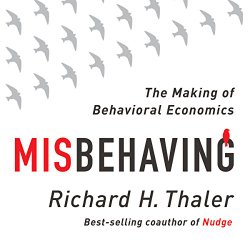 Richard Thaler is known as the father of behavioral economics, and he did his work at the same time as Daniel Kahneman, who gained fame for his work on the same topic as a psychologist. Prior to his papers, economists tended to think that people always acted rationally. Economists would never predict that people would be happy when the bowl of almonds that people were munching right before dinner was taken away, so that their appetite wouldn’t be spoiled. Economists thought that people always acted rationally. Thaler came up with point after point where he realized that that wasn’t true. This book is a story about how he came to realize how irrational we are, and how he slowly proved it, to the chagrin of leading economists of the day.
Richard Thaler is known as the father of behavioral economics, and he did his work at the same time as Daniel Kahneman, who gained fame for his work on the same topic as a psychologist. Prior to his papers, economists tended to think that people always acted rationally. Economists would never predict that people would be happy when the bowl of almonds that people were munching right before dinner was taken away, so that their appetite wouldn’t be spoiled. Economists thought that people always acted rationally. Thaler came up with point after point where he realized that that wasn’t true. This book is a story about how he came to realize how irrational we are, and how he slowly proved it, to the chagrin of leading economists of the day.
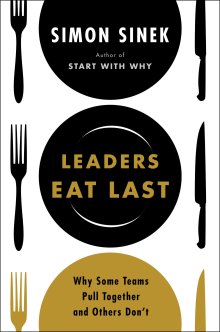 I didn’t really enjoy this book about leadership by Sinek. I get the feeling that he wants to rid the world of bad leaders, but doesn’t know how to do it other than sharing anecdotes of good and bad leadership and hoping you’ll choose wisely.
I didn’t really enjoy this book about leadership by Sinek. I get the feeling that he wants to rid the world of bad leaders, but doesn’t know how to do it other than sharing anecdotes of good and bad leadership and hoping you’ll choose wisely.